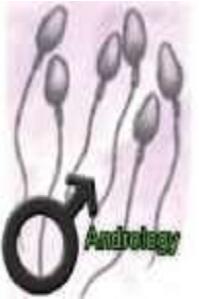Present and futuristic developments in fertility treatment
The scientific advances of recent years have changed dramatically the treatment of infertility. Present and future research and advances will make what seemed impossible as an every day practice in infertility clinics.Amongst the present and future advances are:
Freezing eggs obtained from the woman's ovaries for future use.
Freezing part of the ovary containing immature eggs, so that when the need arises maturing of the eggs is carried out in the laboratory.These freezing processes could help the women who are at risk of loosing their fertility as a result of exposure to radiation (during radiotherapy treatment) or chemotherapy.
Improving the culture media used for growing the embryos in the IVF laboratory to reach the blastocyst stage (5 days after fertilization) where the best embryos are selected, one or two embryos transferred to the uterus, consequently chances of pregnancy and success rates are increased without the need for transferring many embryos with risks of multiple pregnancy.
The latest advances in computer technology has enabled choosing the best sperms for doing intracytoplasmic sperm injection by a method called keiss method where the computer chooses the best sperms for use avoiding the human error factor thereby improving the success rates.
Splitting cells for using instead of sperms.this method is still under research. The idea is that the human cell contains 46 chromosomes, 2 of which are sex chromosomes. In the women two XX chromosomes and in the man XY chromosomes. fertilization occur when the egg from the woman (containing 22 +X chromosome) fuses with the sperm from the man containing either 22 +X or 22 +Y chromosome, so it could be possible to use any cell from the man's body, such as skin cell for example, divide it in the lab and each half could be used (which contain half the chromosome number) to inject inside the egg's cytoplasm using intracytoplasmic sperm injection method, this method will solve the infertility problem for men with no sperms in their seminal fluid or testicles.
Stem cell researchis still confined to labarotories but it is greatly promising where it could be taken from the boys before maturity then frozen to be reimplanted (could be used for those boys who are going to be subjected to chemotherapy). This method could also help infertile men by triggering the stem cells to produce sperms.
Cytoplasm donation where the cytoplasm from the egg of a young woman is transferred into the egg of an older woman thereby improving the chances of pregnancy. The nucleus of the egg from an older woman could in another method be transferred into an egg of a young woman after removing the nucleus containing the genetic material thus improving fertilization and, pregnancy rate.
Intra uterine culture of embryos this method is still under research where the gametes (eggs and sperms) are put in a special container made from a dissolvable material and then transferred inside the uterus for the material to dissolve in one week to release the embryo inside the uterus at the same time that it takes to naturally reach the uterus. The difficulty is in finding the proper material for the purpose without being rejected by the uterus.
Artificial uteruswhere special plastic incubators are used to provide the suitable atmosphere for the growth and development of the fetus until maturity, the fetus is supplied with what she or he needs whether for nourishment or oxygen and completely grown in the artificial uterus. This could help fetuses delivered prematurely or for those women where pregnancy endangers the woman's life or in those who congenitally the uterus is absent. Finally the recent advances in science are too many to list. All we can say is that, what seemed impossible few years ago is common practice these days.


